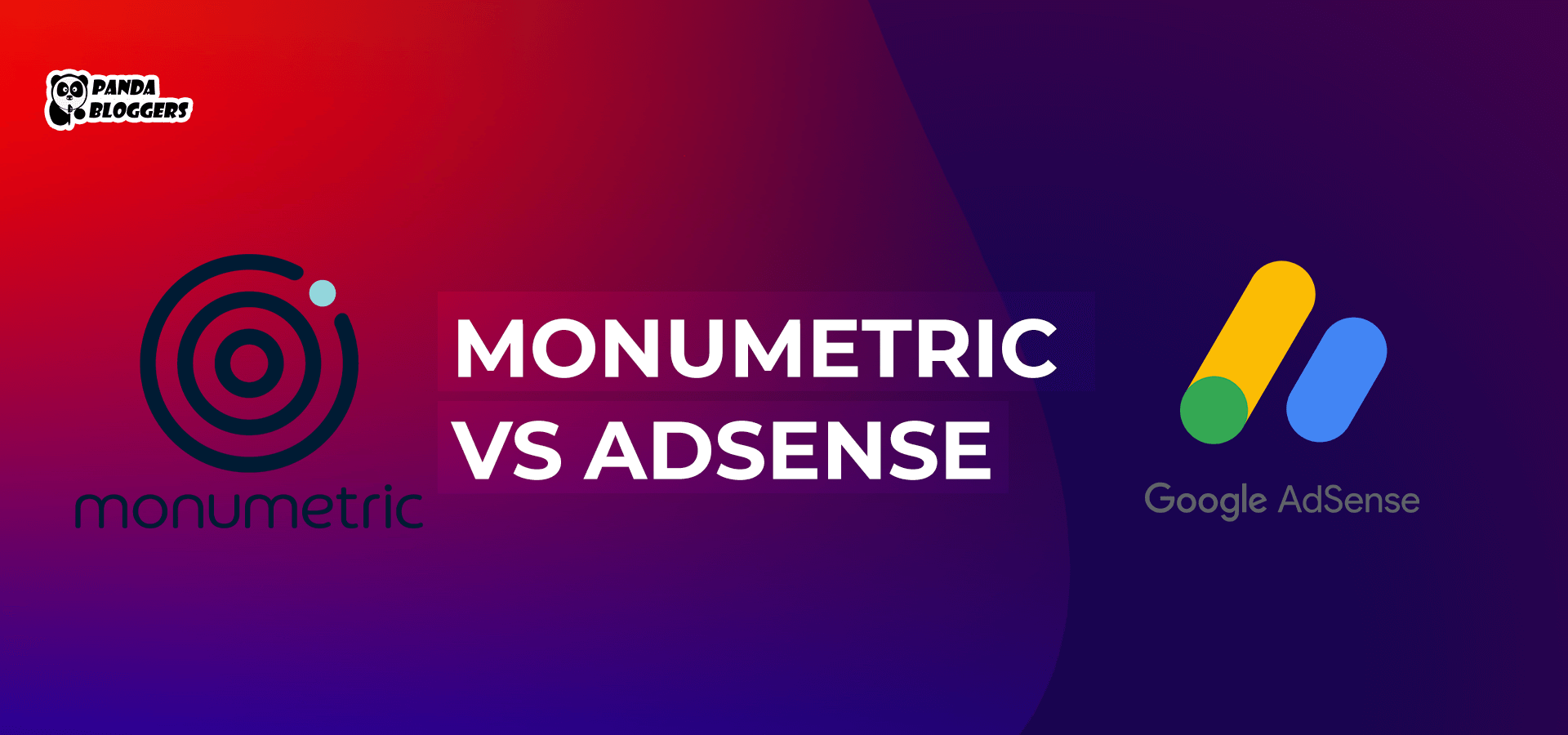 Monumetric vs AdSense
Monumetric vs AdSense
Both Monumetric and AdSense help content creators and publishers earn money by monetizing their websites. AdSense is a free program run by Google that helps content publishers monetize blogs, websites, and YouTube videos by displaying relevant ads. Google simplifies website monetizing by sorting, administering, and maintaining the display ads.
Monumetric is one of the premium ad networks. It monetizes websites using proprietary tools. Also, it helps website owners increase ad revenue by customizing ad strategies, sharing data-driven insight, and boosting website user experiences. In addition, it allows bloggers to choose from four ad monetization programs according to their websites’ monthly page views. You can find a detailed review of the Monumetric ad network here.
At present, Google AdSense is being used by over 3,669,843 websites, while Monument is being used by over 4,600 websites. However, you must not use usage statistics as the primary criteria while comparing and choosing ad networks. We are making it easier for you to monetize your website by discussing the key differences between Monumetric and AdSense.
Monumetric vs AdSense (Similarities and Differences You Should Keep in Mind)
Monthly Page Views
Google has not set any minimum traffic threshold for AdSense. Hence, it becomes easier for bloggers to monetize websites that have less than 10,000 page views per month. But Monumetric has set the minimum traffic threshold at 10,000 page views per month for websites.
Also, the traffic threshold varies across ad monetization programs run by Monumetric. For instance, you can join the Proper Program if your website has over 10,000 monthly page views. Likewise, your website must have more than 5 million monthly page views to join the Stratos program and over 10 million page views per month to join the Apollo program.
Additionally, Monumetric approves websites that receive 60% of visitors from English-speaking countries. Also, it prioritizes websites that receive the most traffic from specific countries like the US, UK, Canada, and Australia. Hence, you may find it easier to monetize a new website using AdSense instead of Monumetric.
Approval and Setup
AdSense program reviews and approves websites in about 2 to 4 weeks. Also, it allows content publishers to set up ads on approved websites without paying any initial fees. Monumetric takes more time to review and approve websites.
The ad network approves or rejects website monetization requests after 2 months. Additionally, it requires website owners joining the Propeller program to pay $99 as a one-time setup fee. Hence, you have to pay an initial fee and wait for a longer duration to monetize websites using Monumetric.
Content Policy
You can monetize a website or blog using AdSense only when it complies with the latest Google Content Policy. For instance, the policy requires you to publish only unique and relevant content. In addition, you must not increase website traffic by purchasing traffic, using spammy SEO techniques, or running third-party ad campaigns.
Monumetric monetized websites without assessing content types and quality elaborately. But it recommends you block ads that fall under sensitive categories like religion, sexuality, gambling, weight loss, and dating. The team at Monumetric filters ads displayed on your website and blogs to block inappropriate and miscategorized ads.
Advertising Model
Google has developed AdSense as a pay-per-click (PPC) ad network, while Monumetric is developed as a pay-per-view (PPV) ad network. Hence, AdSense pays ad revenue only when website visitors click on ads and gather information about the product or service. At the same time, Monumetric pays ad revenue each time a website visitor is exposed to the display ads. Hence, Monumetric helps website owners earn more ad revenue than AdSense.
Supported Ad Formats
Both AdSense and Monumetric support multiple ad formats. For instance, AdSense allows you to display responsive, fixed-sized, native, and sticky ads. Likewise, Monumetric currently supports leaderboard, skyscraper, half-page, in-image, in-screen, pillar, editorial videos, and other ad formats. Hence, you can earn and generate ad revenue by displaying a variety of ads on your website.
Ad Units
AdSense does not restrict the number of ad units to be displayed on a single page. However, the ad network recommends bloggers determine the number of ad units according to content length. For instance, you have to reduce the number of ads while monetizing short blog posts.
But you can increase the number of ad units while monetizing long blog posts. Monumetric allows you to choose the number of ad units to be displayed on a web page without any restrictions. However, the Propel program run by the ad network requires you to display at least 6 ad units on a page.
Ad Management and Support
While using AdSense, you can get the required support by clicking on the Contact Us option appearing on the web page. The ad networks help content publishers increase ad visibility and views by sharing several websites and ad monetization tips. Monumetric is developed as a fully managed ad network.
It helps content publishers optimize ad performance by providing responsive customer support. A publisher can connect with a real customer support executive using channels like phone, emails, and chat. In addition, Monumetric helps them boost ad performance by sharing data-driven insights and proprietary technologies.
Dashboard
Both AdSense and Monumetric provide dashboards that help content publishers monitor ad and campaign performance. You can use the dashboard to monitor and measure ad performance by tracking important metrics like page impressions, ad clicks, estimated earnings, and revenue earned.
You have the option to use several Google AdSense dashboards and templates provided by third-party developers. However, content publishers consider the dashboard provided by Monumetric as limited and sparse. The dashboard does not provide additional information and tools required to optimize ad settings and performance.
Revenue Sharing
Google shares 68% of ad revenue with content publishers who display ads with AdSense content. Monumetric shares 70% of ad revenue with content publishers. However, the ad revenue earned by a content publisher varies based on a variety of factors, including traffic level and reader demographics. Hence, you have to focus on many factors to increase ad revenue using AdSense or Monumetric.
Payment
Both Monumetric and AdSense allow you to choose from multiple payment methods. But AdSense has set the minimum payment threshold at $100 USD. Also, the payment thresholds set by AdSense vary across currencies. AdSense takes NET 25 days after the month to review and pay ad revenue to content publishers. On the other hand, Monumetric has set the minimum payment requirement at $10. But it extends the time required to review and pay ad revenue to publishers to NET 60 days.
Conclusion
At present, Google AdSense is the dominant ad network, while Monumetric is one of the viable AdSense alternatives. AdSense enables you to monetize a website regardless of its monthly traffic. But it requires you to comply with the latest Google Content Policy. But you can monetize a website using Monumetric only when it has over 10,000 monthly page views.
Also, you can choose from four ad monetization programs according to your website’s monthly page views. Beginners prefer AdSense to Monumetric while monetizing their websites and blogs. They increase ad revenue by switching from AdSense to Monumetric as their websites’ monthly page views increase. But you must keep in mind these key differences while choosing from Monumetric and AdSense.









Leave a Reply